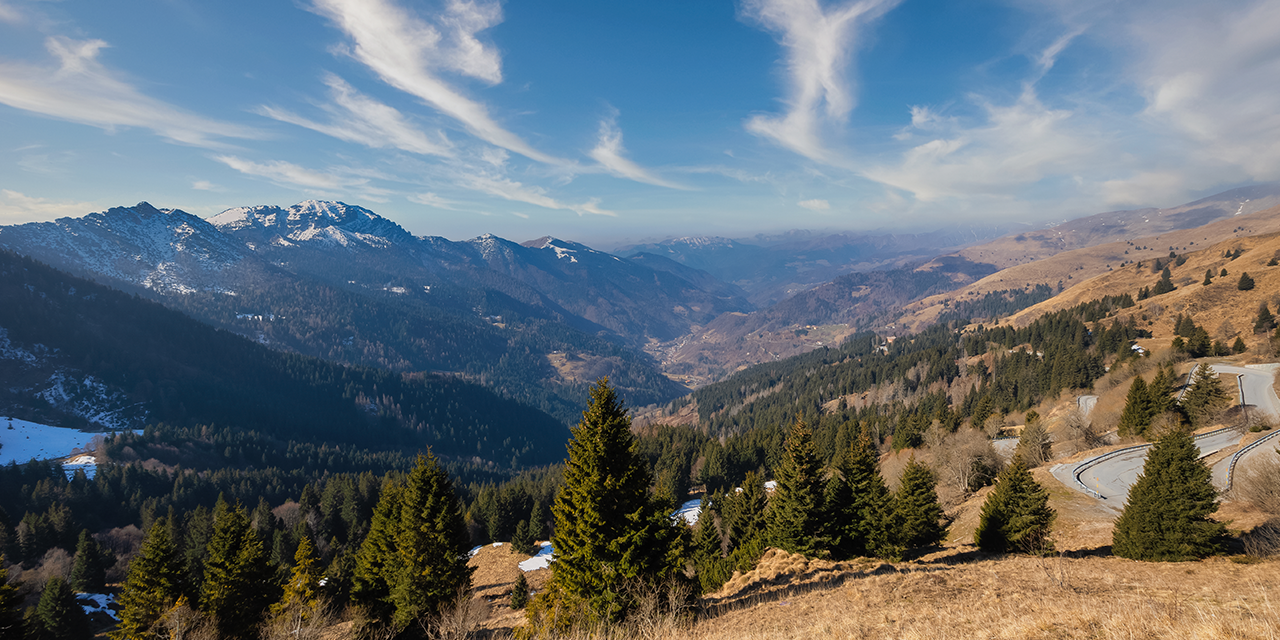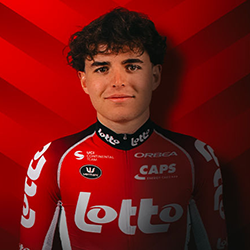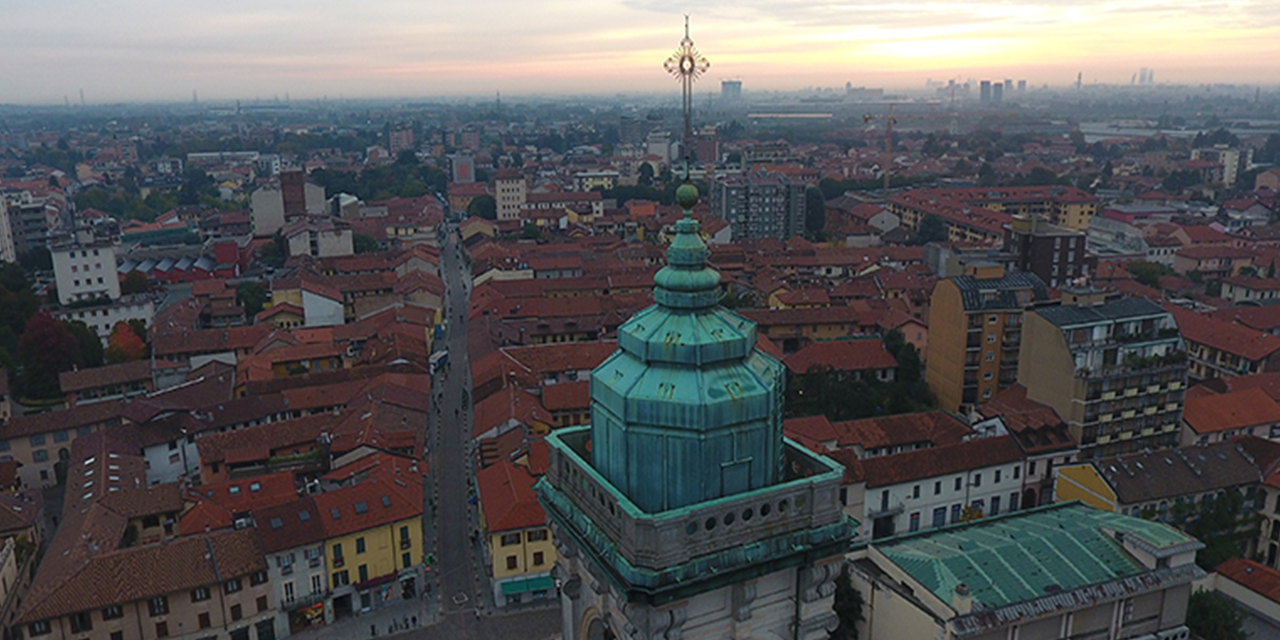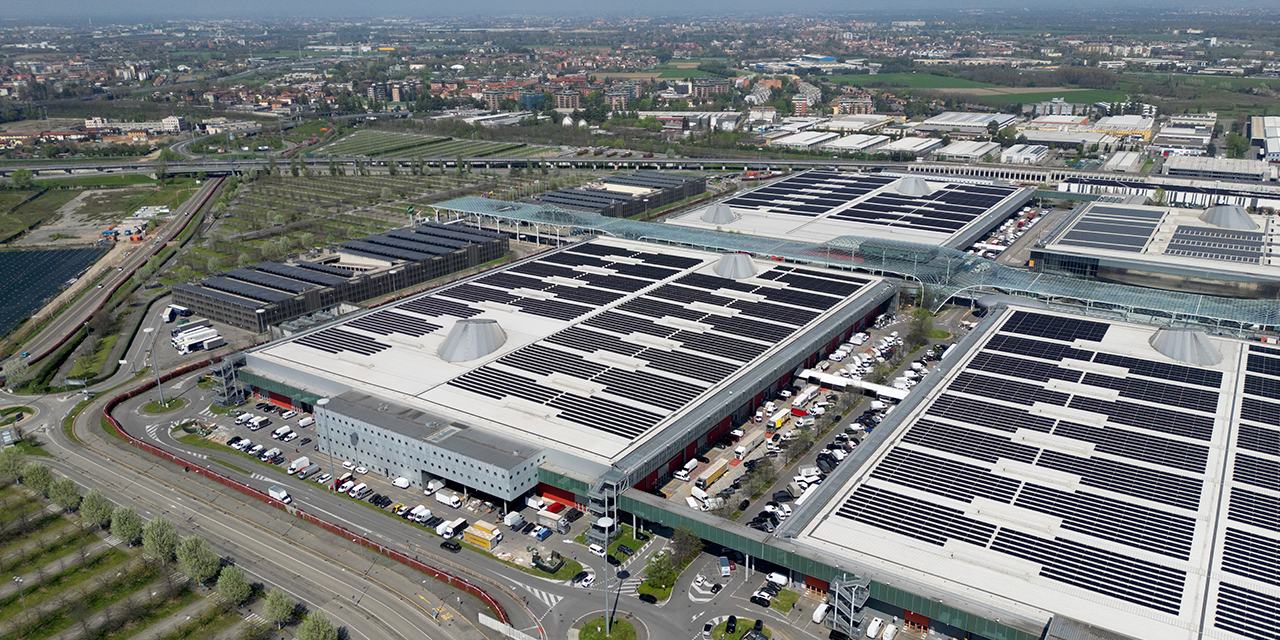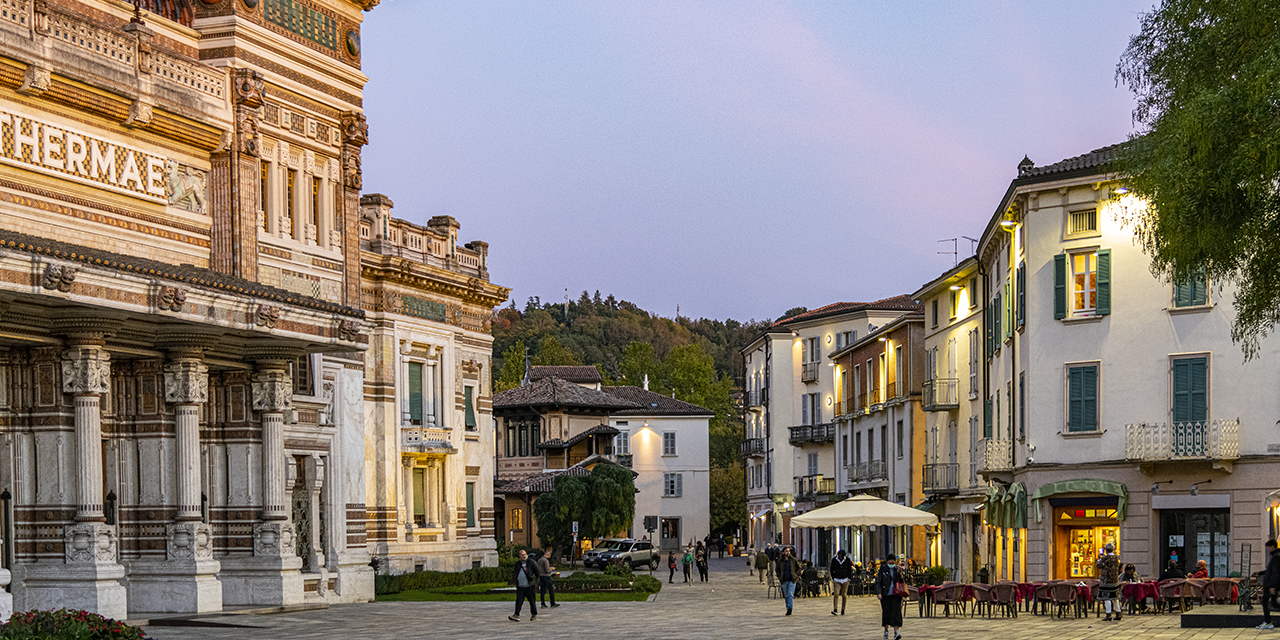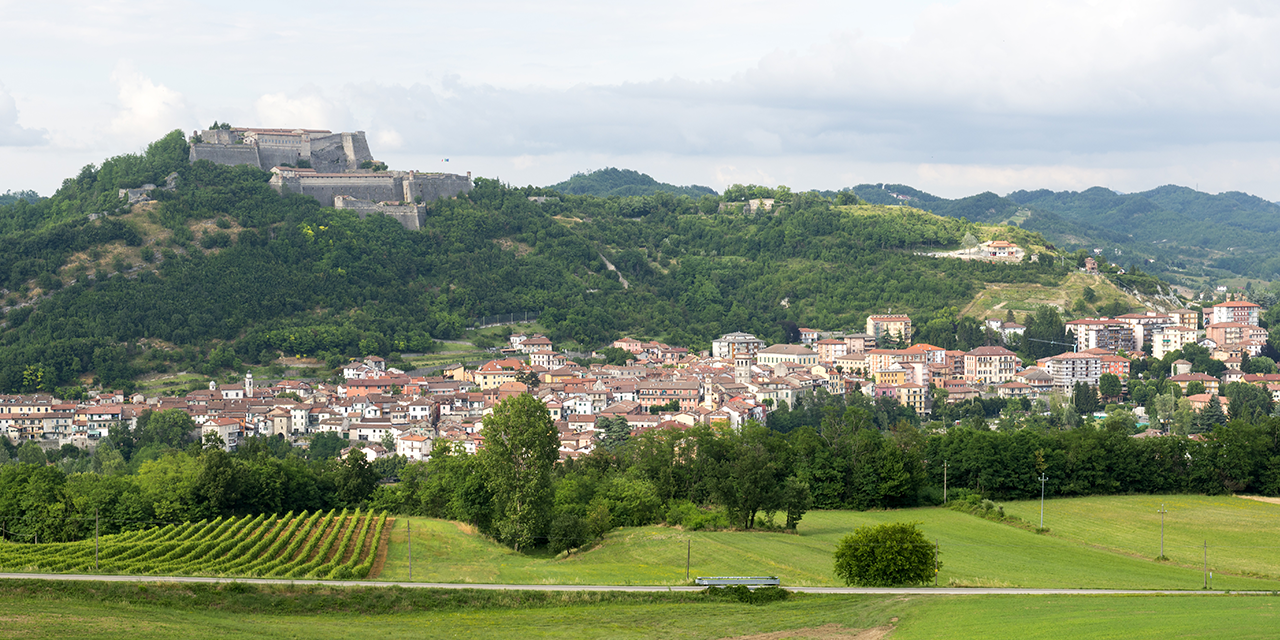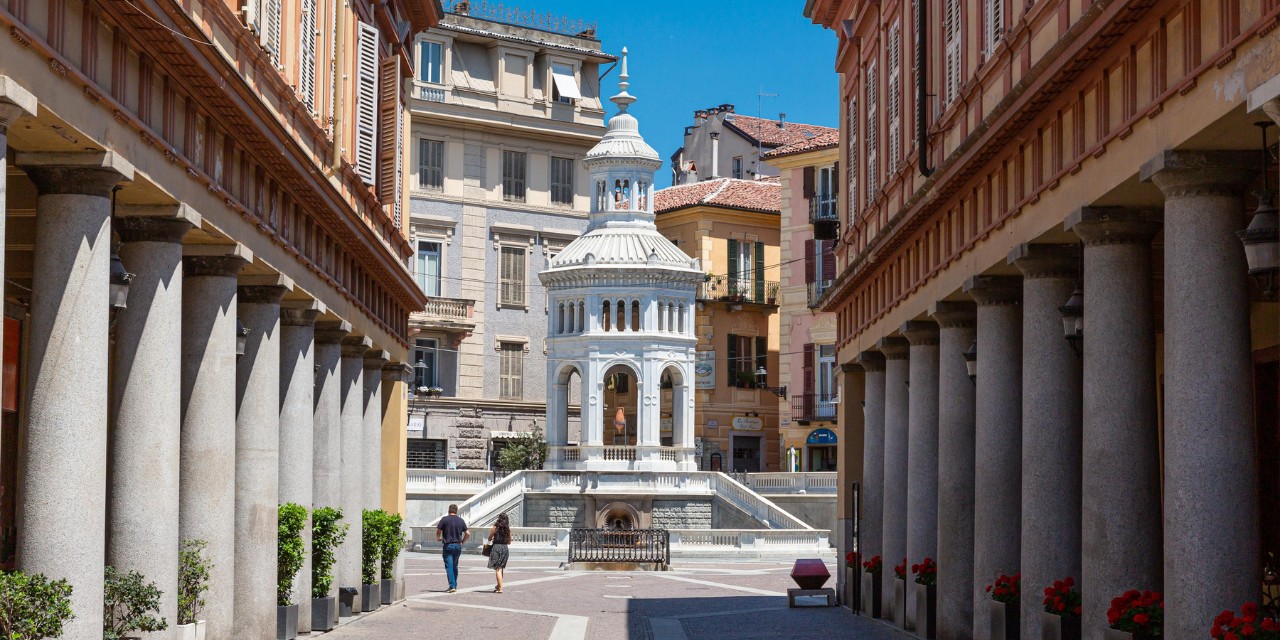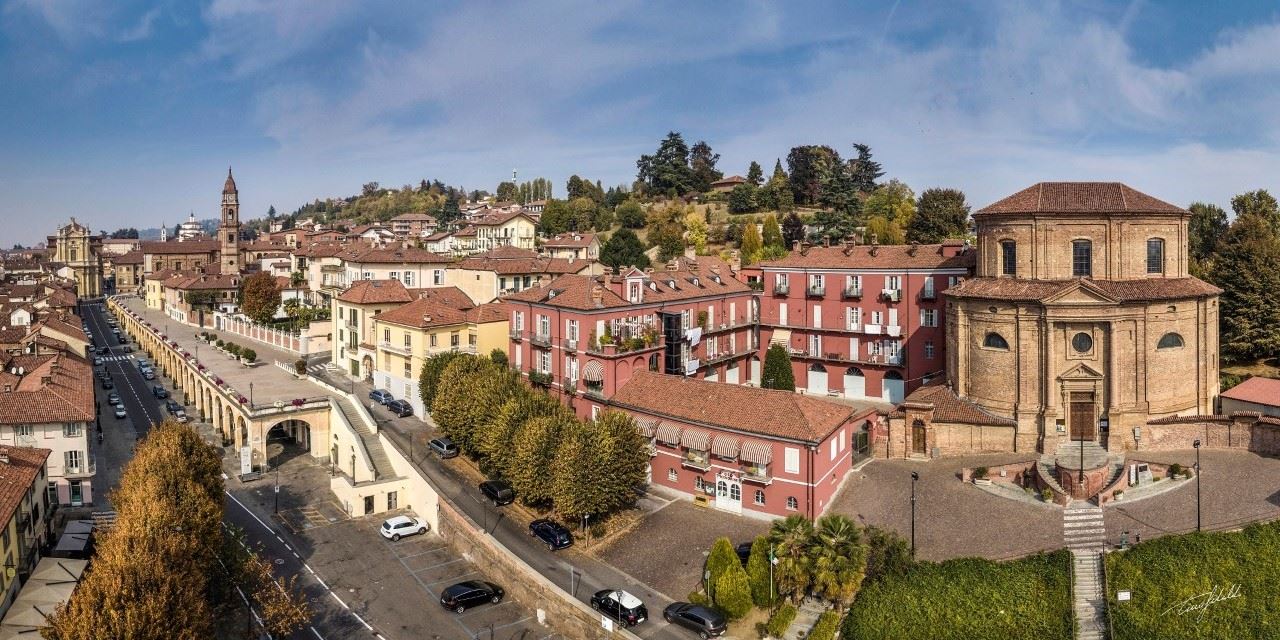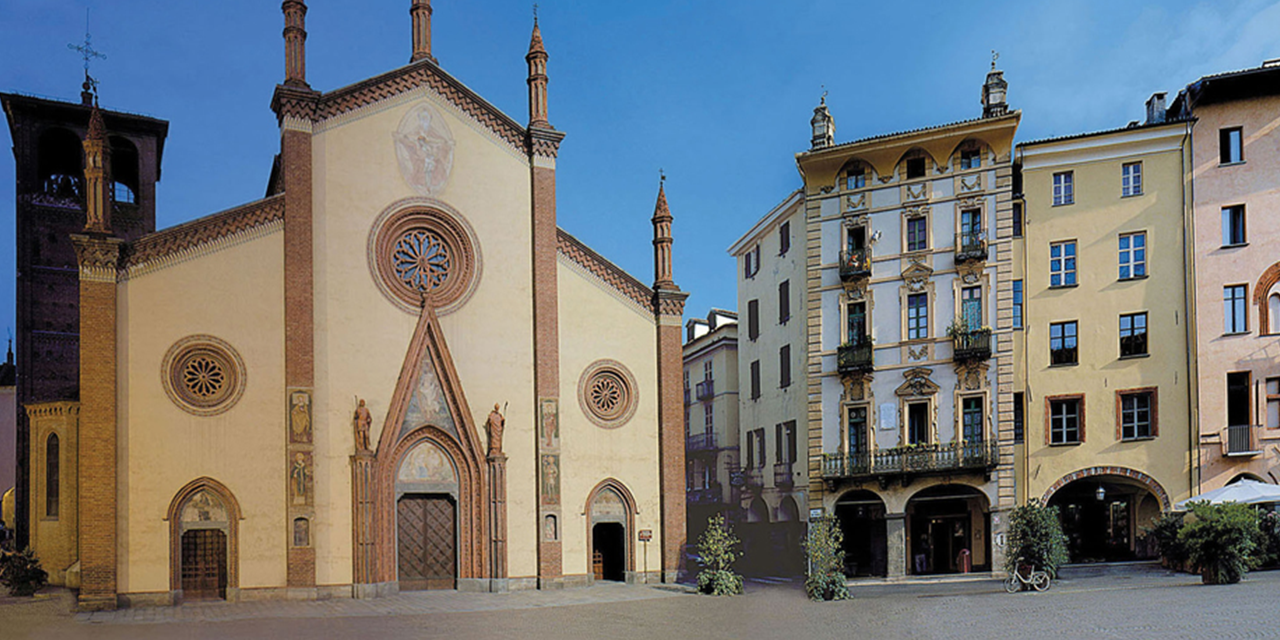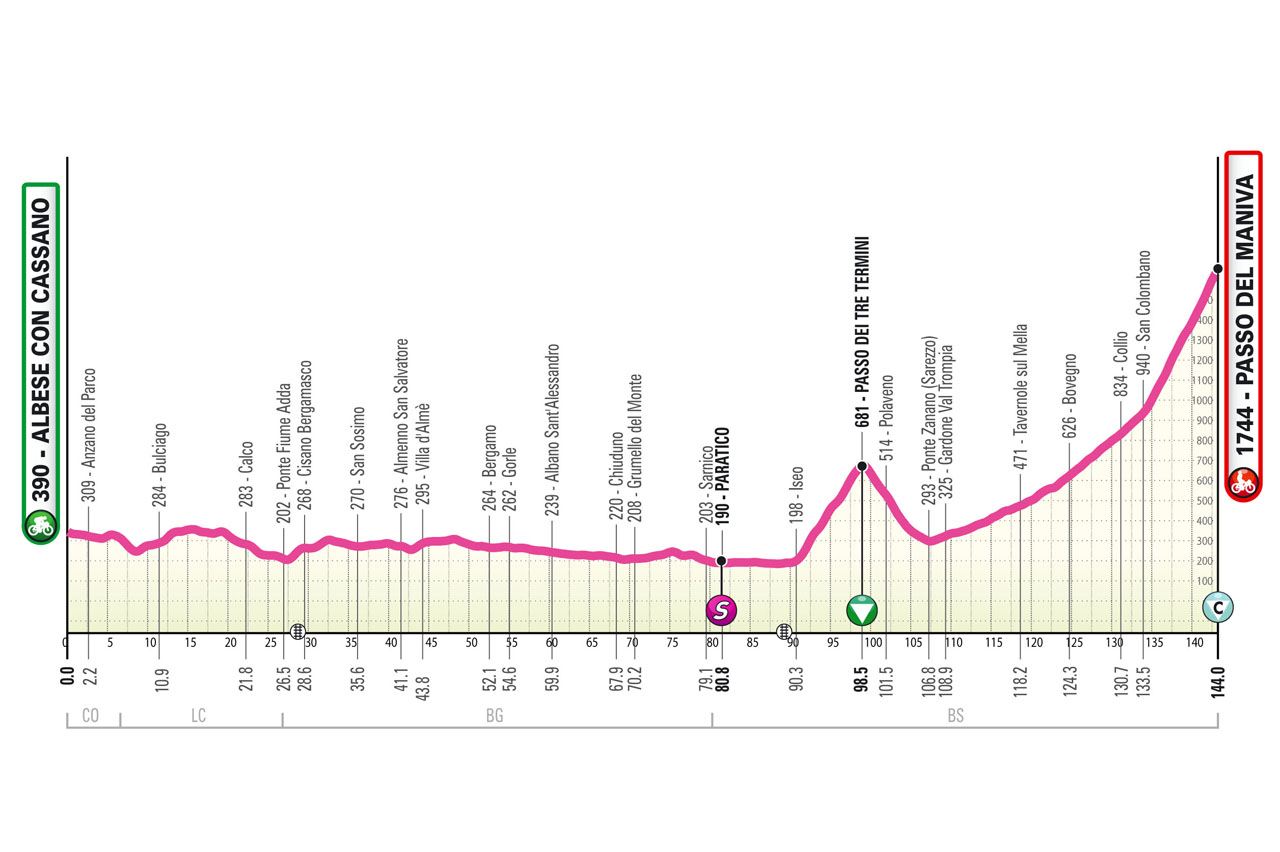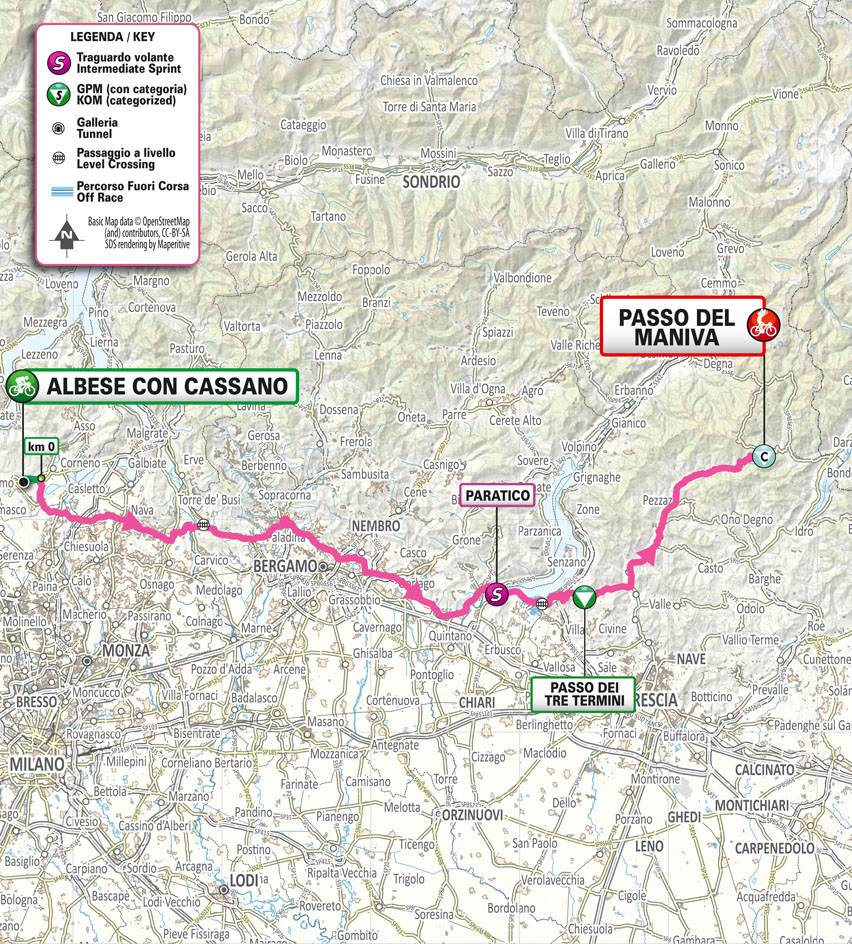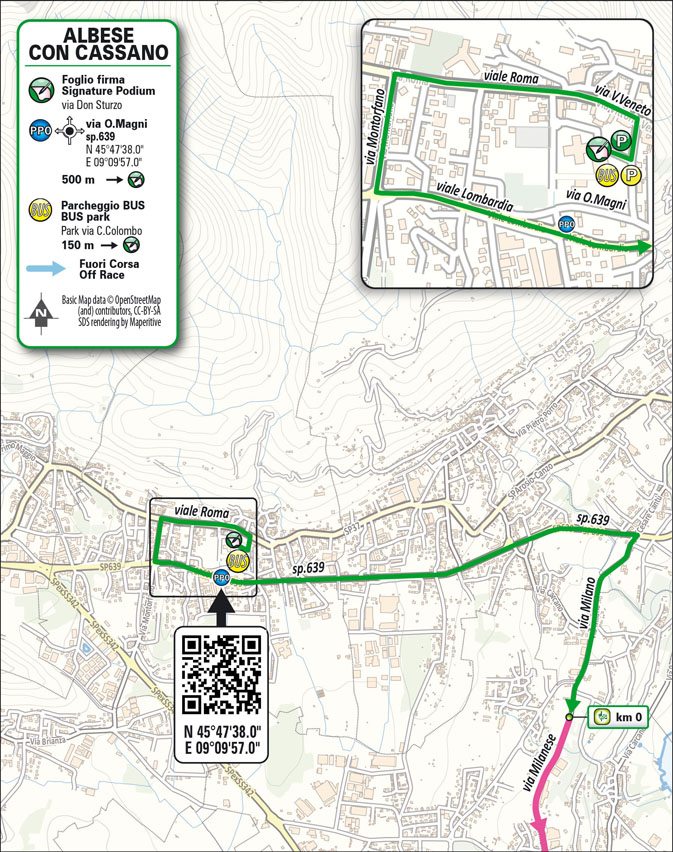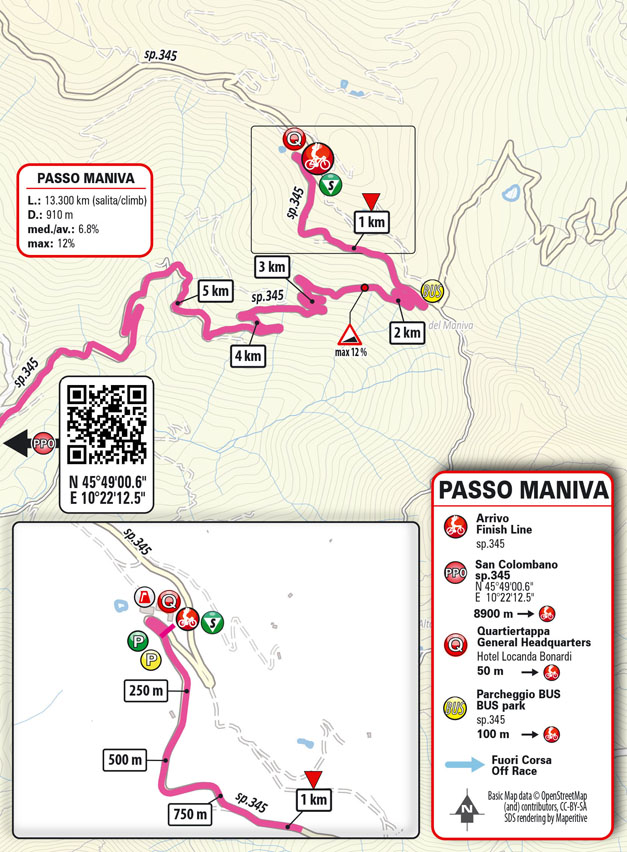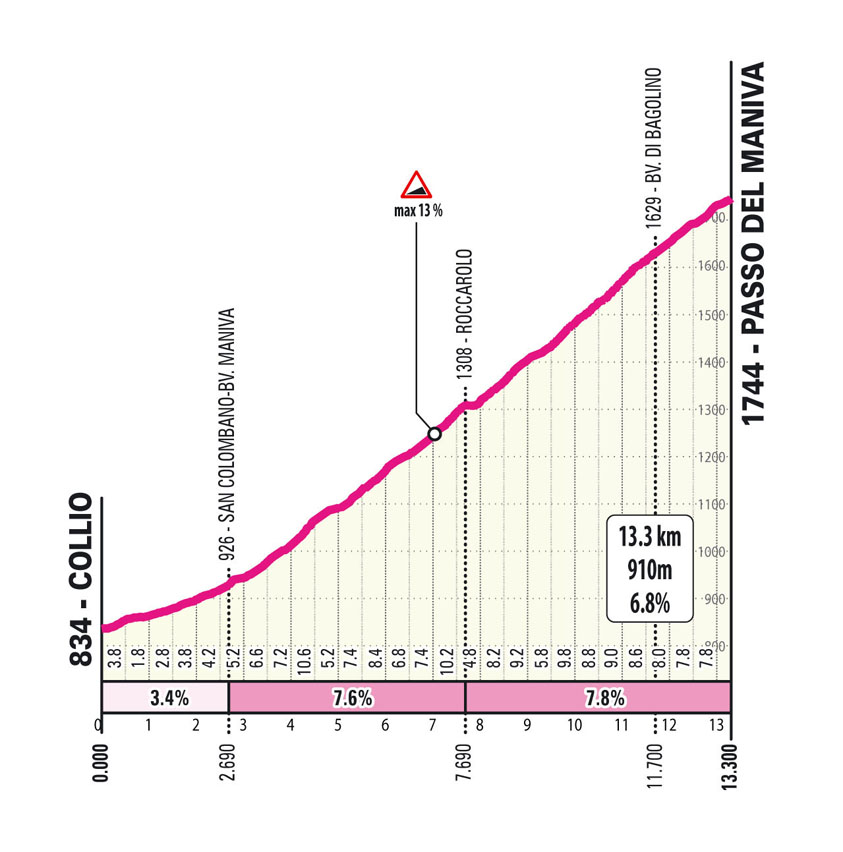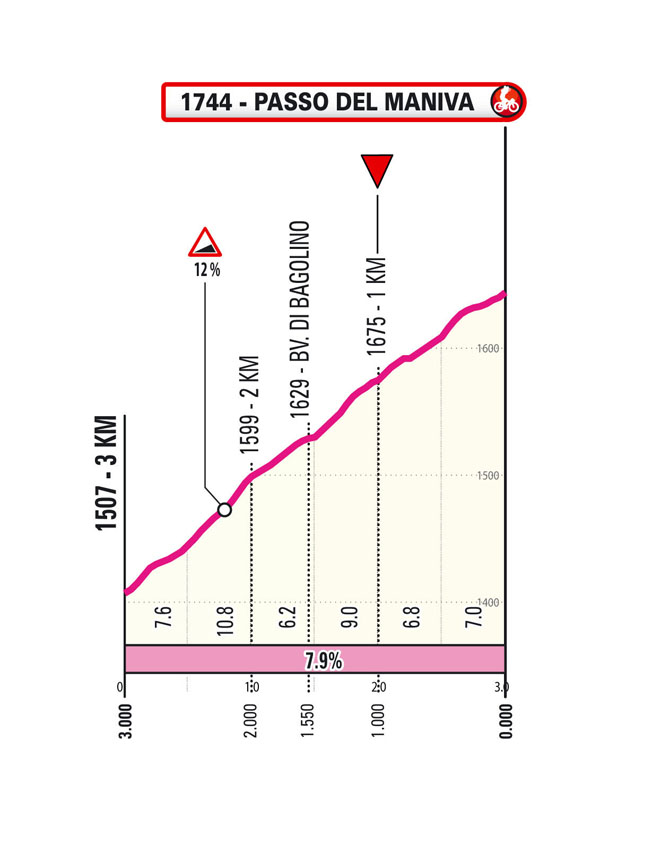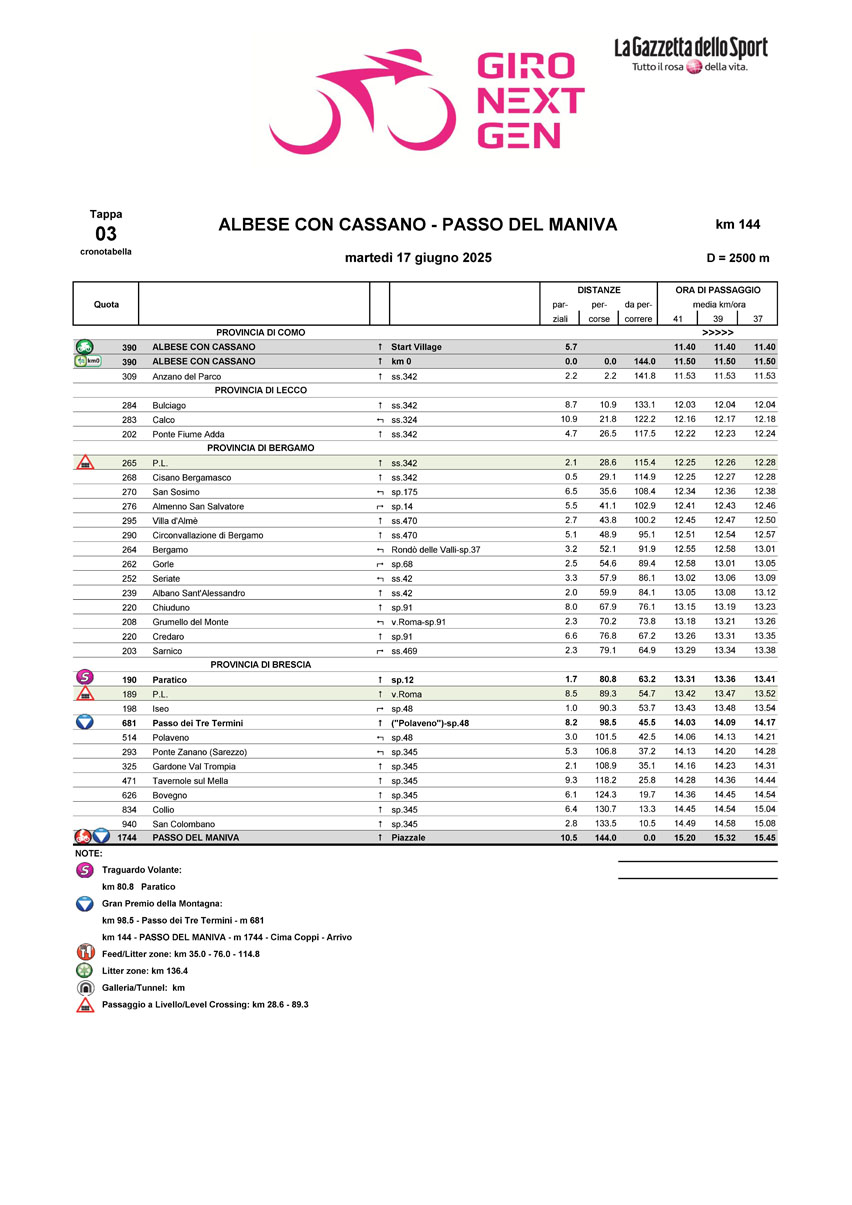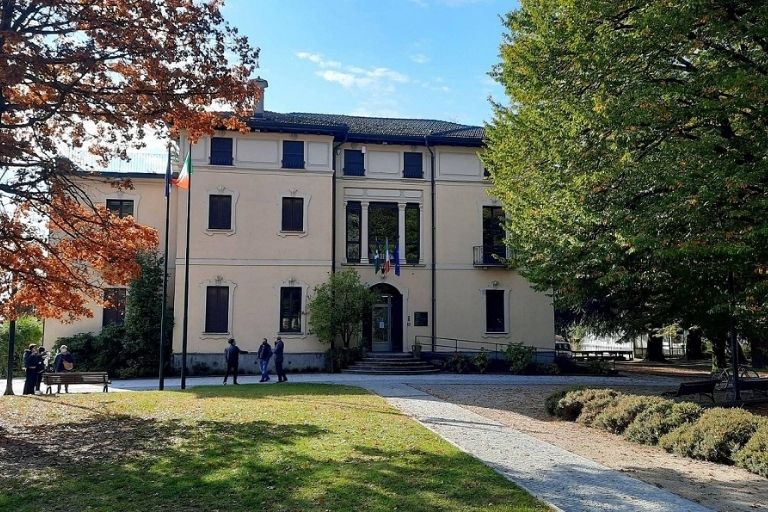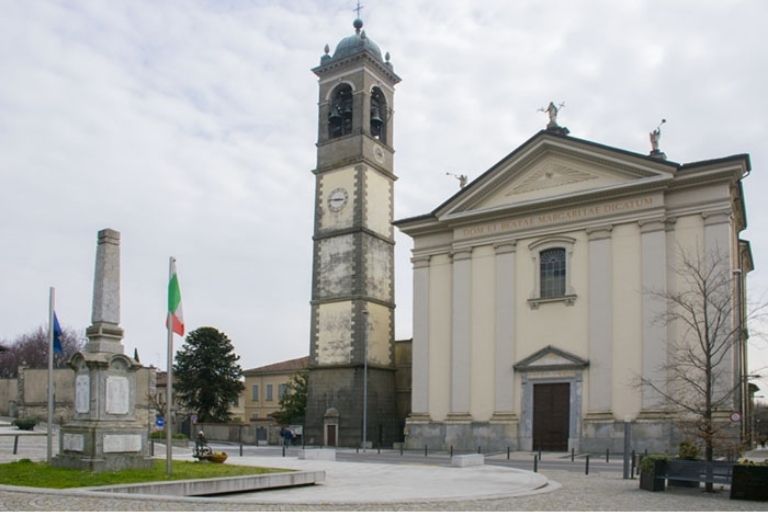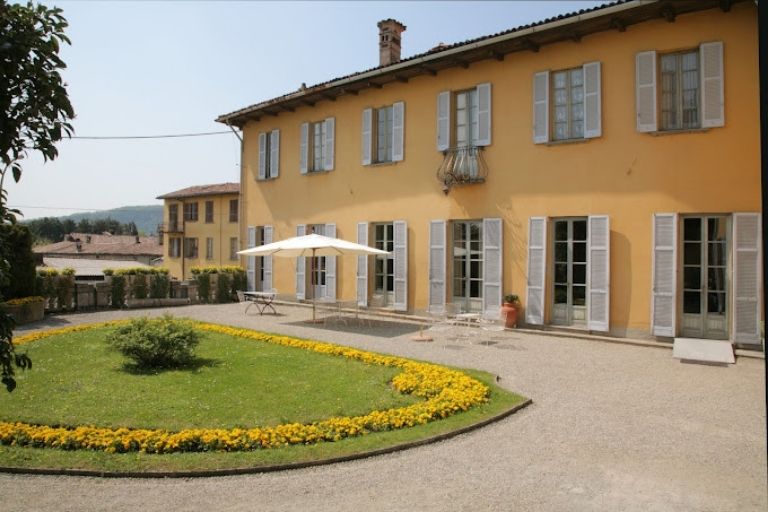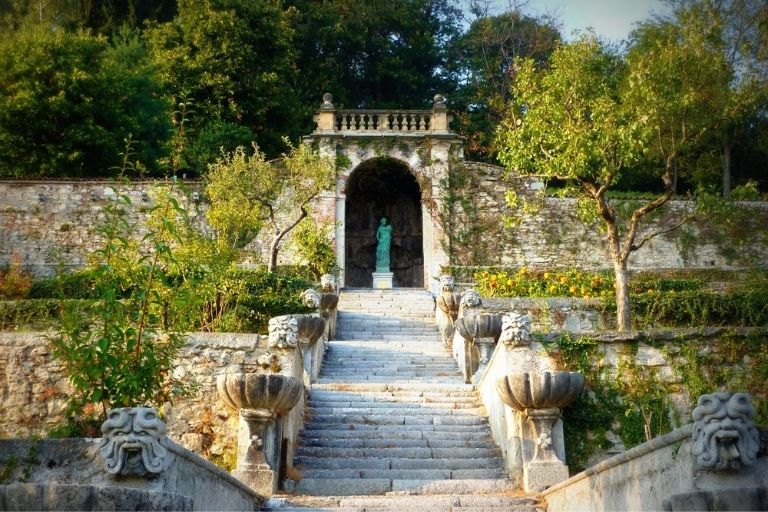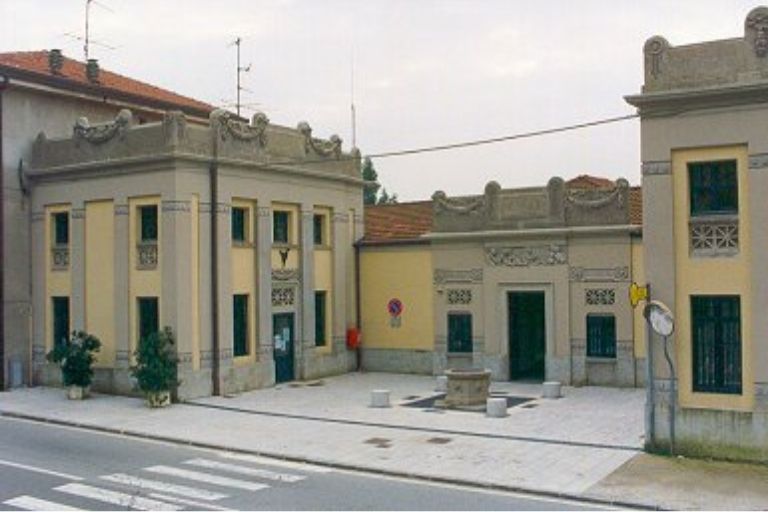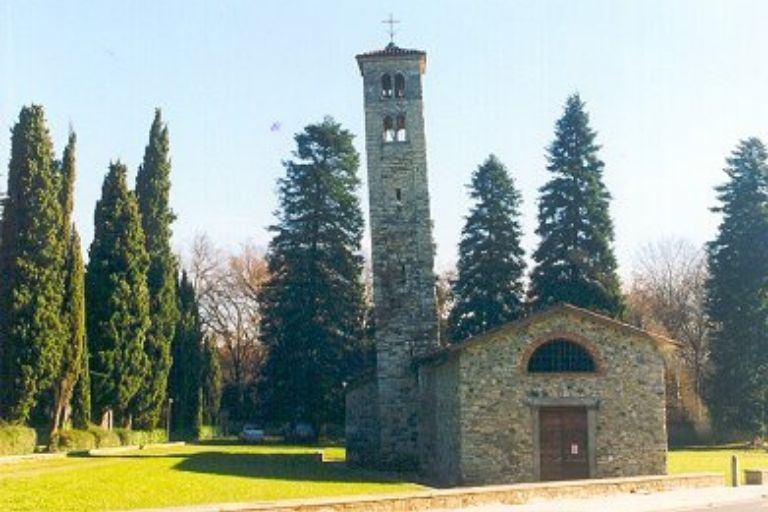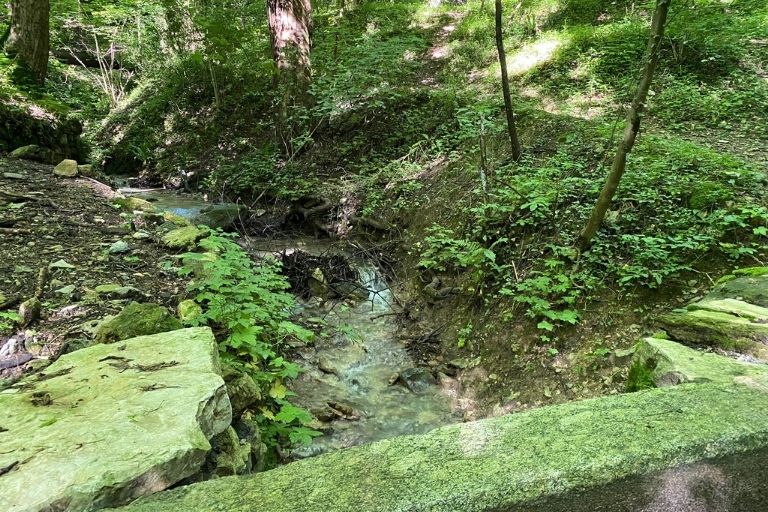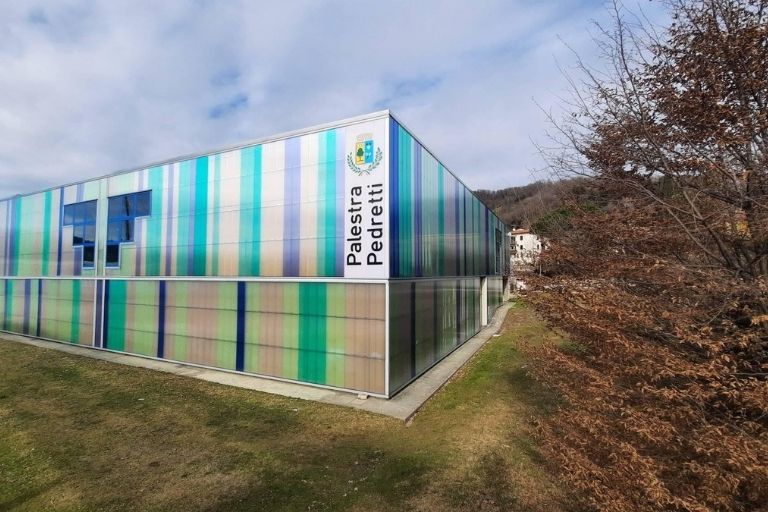learn more
technical info
profile
map
technical info
The first summit finish of the Giro Next Gen. A long approach through the plains of Brianza and Bergamo, with continuous towns one after the other, until reaching Lake Iseo. After Sarnico and Iseo, riders will climb the Passo Tre Termini (known among cyclists as Polaveno), which leads into the Trompia Valley. From there, the road climbs constantly, with the final ascent to Passo Maniva (the Cima Coppi of GNG25) beginning after San Colombano.
Last Km
The last kilometers are a steady climb (7–8%), with several switchbacks, the final one located just 150 meters before the finish.
start / finish
climb detail
final kilometres
itinerary timetable
tourist info
Host city:
Albese Con Cassano
Overview
Albese con Cassano is a municipality in the Larian Triangle, located in the province of Como, a few kilometres from the provincial capital and along the road leading to Lecco. The town, nestled in the green between the lakes and mountains of Lombardy, has always been linked to cycling: it is the birthplace of two Olympic champions, Fabio Casartelli and Paolo Pedretti, symbols of passion and sporting determination. It is an area to be proud of, combining natural beauty, a sporting vocation and a rich historical past.
Albese con Cassano was also an important centre for silk manufacturing, testimony to the ingenuity and industriousness of its people. Also of great importance is the working and laying of local stone, widely used for paving, mosaics and garden furniture. An artisan tradition deeply rooted in the territory, capable of combining functionality, aesthetic taste and valorisation of natural resources.
Points of Interest
Church of St. Peter
The Romanesque Church of St. Peter is distinguished by its leaning bell tower, symbol of the village and visibly disproportionate to the building. The origins of the building are very old: archaeological excavations conducted in the 1980s revealed the presence of a chapel as early as the Longobard and Carolingian periods, confirmed by the discovery of a wall fragment dating back to the 5th or 6th century. Initially, the bell tower was a signal tower. During the plague of 1630, the building was used as a hospital and many of the interior decorations were covered with lime. The current appearance of the church dates back to the 16th century.
Inside, several frescoes can be admired: on the back wall is a Madonna with St. Peter on the left, and a Madonna of milk with a Franciscan saint, possibly Bernardine of Siena, on the right. A tabernacle is visible at the bottom. On the left side of the church is a large canvas depicting Christ Crucified with St Peter and St Francis. There are also traces of a 12th-century fresco.
Parish Church of Santa Margherita
Built in 1792 in neoclassical style, the parish church of Santa Margherita is the main religious building in the village. The bell tower was built later and joined to the church in 1852. Much of the interior decoration, in neoclassical style, was designed by Cesare Oggioni. The nave opens onto four side altars and is surmounted by a barrel vault divided into three bays. On the right side is a chapel dedicated to Our Lady of the Rosary, decorated with frescoes depicting Saint Apollonia and Saint Agatha, by Gaetano Barabino. Near the sacristy, a niche houses a depiction of the Education of the Virgin, also by Barabino. The sacristy houses a valuable 17th-century antependium from the ancient church of Albese. The apse features three allegorical frescoes depicting the theological virtues – Faith, Hope and Charity – painted in 1861 by the painter Verga.
Above the main entrance, in the choir loft, is the imposing monumental organ in neoclassical style, built in 1835 by the Prestinari brothers and subsequently renovated in 1889 by the Talamona company and Vedani. Large in size, it dominates the space with its scenographic presence and bears witness to the church’s rich musical tradition.
Historic villas and gardens in Albese con Cassano
A journey through elegance, art and memory in the heart of the Larian Triangle.
Albese con Cassano preserves an astonishing heritage of historic villas, gardens and oratories that tell the story of a town that has always been inhabited by illustrious families and linked to the architectural taste of the various eras. Strolling through its streets, one encounters 17th-century noble residences, romantic parks and testimonies of great artistic refinement.
- Villa Parravicini di Persia and the Oratory of Santa Elisabetta
In the heart of Albese con Cassano is Villa Parravicini di Persia, one of the oldest and most prestigious residential complexes in the town. The earliest records date back to 1560 and the original nucleus of the villa is the north courtyard, overlooking the garden. The oldest rooms are located on the first floor, where there are large halls now used for worship and entertainment, and on the second floor, with coffered ceilings and 17th-century frescoes, evidence of the mastery of Como artists of the time.
Inside the garden is the Oratory of St. Elisabeth, a Baroque-style building that was conceived as a private family chapel and decorated with frescoes and stuccoes of considerable value.
- Villa Odescalchi, today Villa Santa Chiara
One of the most fascinating residences is Villa Odescalchi, today known as Villa Santa Chiara. Already mentioned in documents dating back to 1614 and renovated in the Baroque style, the villa is surrounded by a spectacular garden: a large English-style park with centuries-old trees, cypress avenues and neo-Romanesque terracing leading up to the Church of San Pietro. A poetic corner, which can be visited by appointment.
- Villa Visconti Crivelli (today Villa San Benedetto)
In 1809, architect Simone Cantoni oversaw the redevelopment of this elegant residence with its 18th-century Italian-style garden. With its geometries and sober forms.
- Villa Bassi Roncaldier
Built between the end of the 17th and the beginning of the 18th century, Villa Bassi Roncadier is distinguished by its Baroque style and the formal garden that completes its scenographic layout.
- Villa Greppi (ex Villa Bassi)
Built at the end of the 19th century to the design of architect Emilio Alemagna, Villa Greppi is a neo-Rococo jewel. Surrounded by an English-style garden full of romantic charm.
- Other villas embellish the area with their presence:
Villa Andujar, also known as Villa Masciadri, of 17th-century origin, with aristocratic architectural details Villa La Galetera, Villa Pontiggia, Villa Brunati, Villa Pellegrini Sormani, Villa Della Porta: each one tells a piece of history, an aesthetic taste, a moment in the social and cultural life of the town.
- Villa Campari
Built in the 1940s-1950s by architect Giovanni Muzio, Villa Campari is the most recent of the historic villas in Albese con Cassano.
Videos Stage 03

Giro Next Gen 2025 | Stage 3 | Best Of
17 Jun 2025
Giro Next Gen 2025 | Stage 3 | Highlights 🇬🇧
17 Jun 2025
Giro Next Gen 2025 | Stage 3 | Last KM 🇬🇧
17 Jun 2025Photos Stage 03
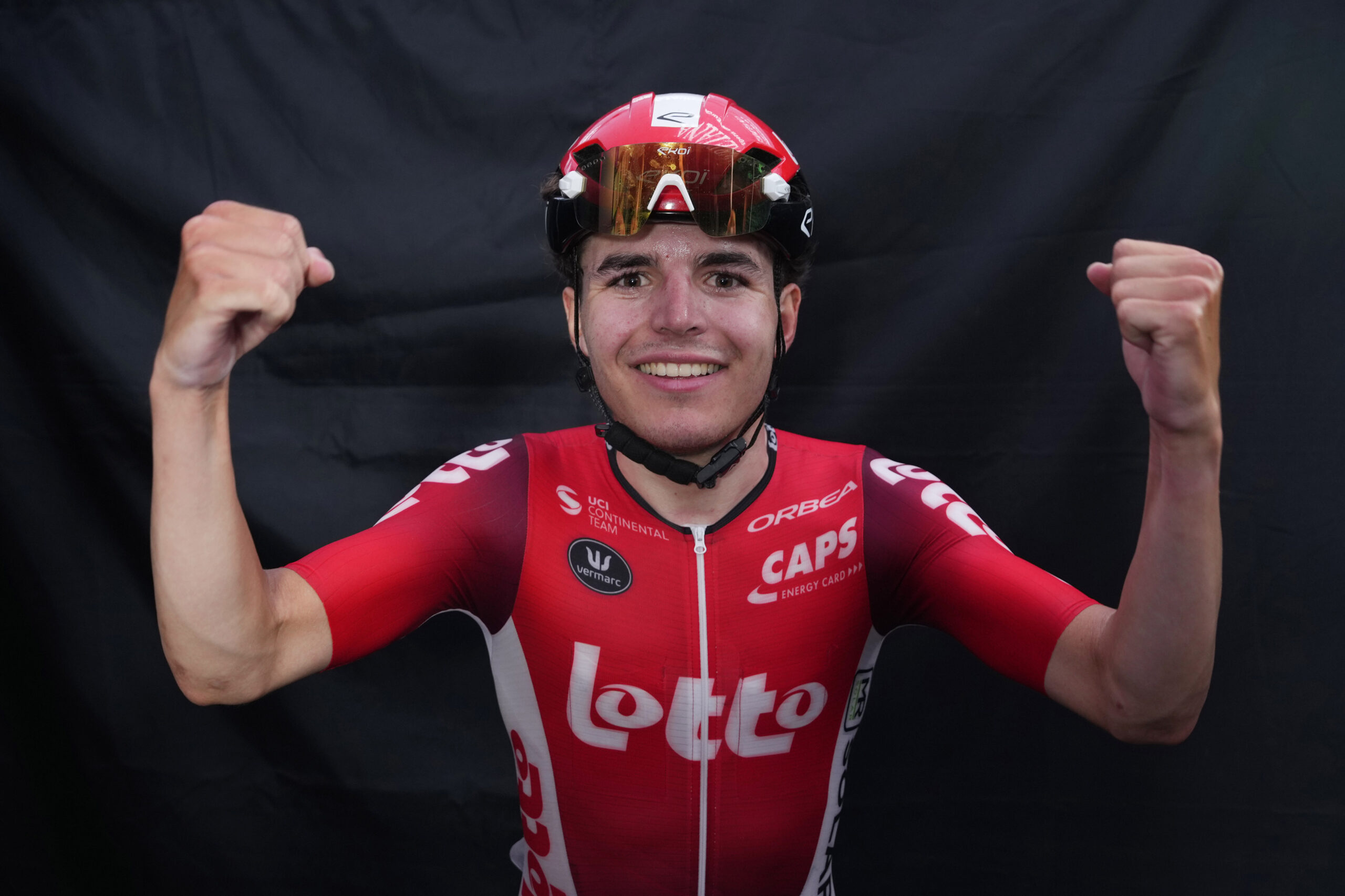
Giro Next Gen 2025 | Stage 3 | Best of
17/06/2025

